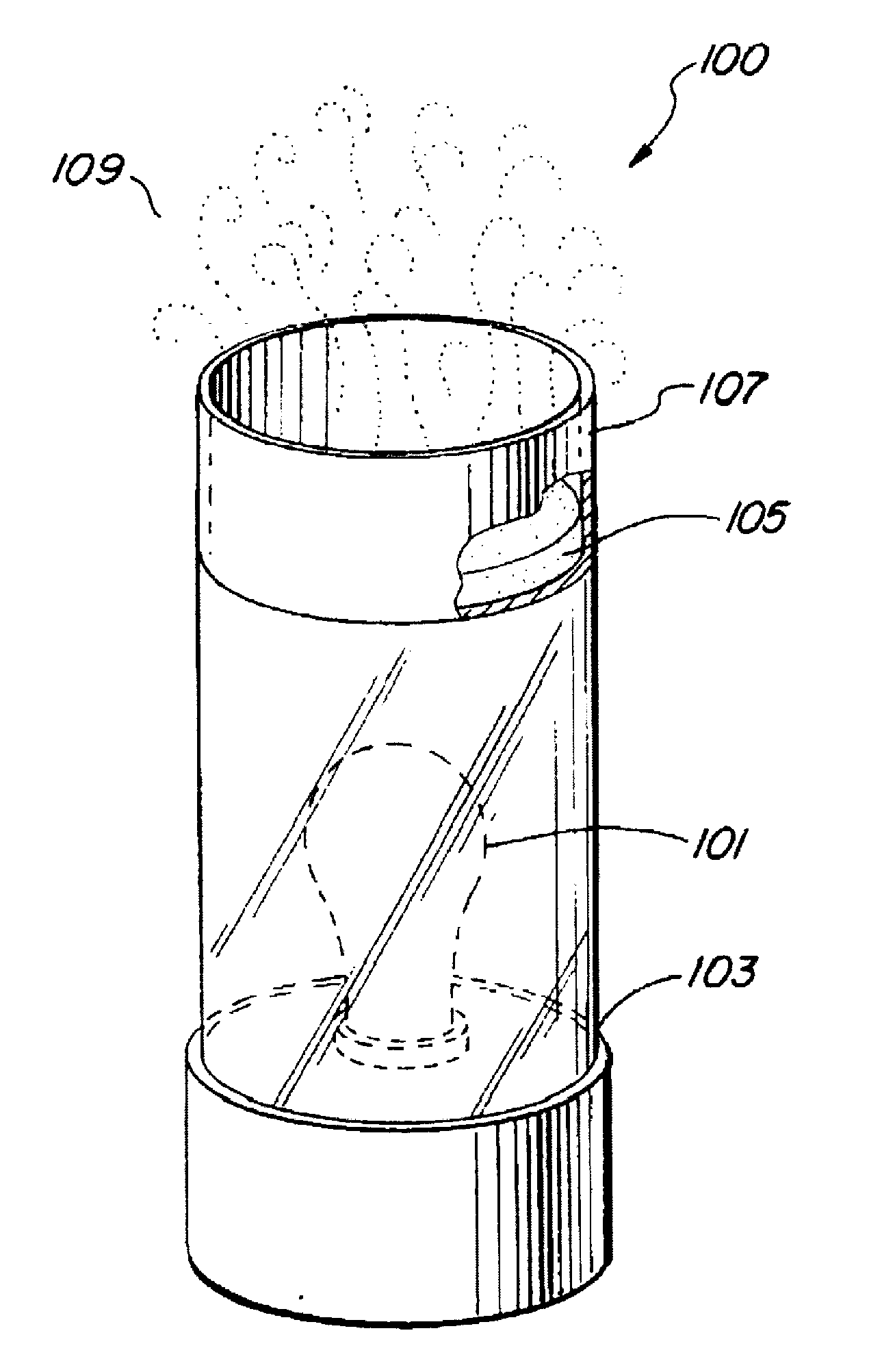Organic Insect Extermination Lamp
an insect extermination lamp and organic technology, applied in lighting and heating apparatus, container discharge methods, heating types, etc., can solve the problems of unreliable known methods for repelling or destroying mosquitoes and other biting insects, affecting the health of the environment, and causing unfavorable local migration, so as to reduce heat or thermal emissions
- Summary
- Abstract
- Description
- Claims
- Application Information
AI Technical Summary
Benefits of technology
Problems solved by technology
Method used
Image
Examples
Embodiment Construction
[0023]The word “organic” is used herein to mean “of, relating to, or derived from living organisms.”
[0024]The word “natural” is used herein to mean “as being in accordance with or determined by nature: having or constituting a classification based on features existing in nature.”
[0025]The words “natural” and “organic” are used herein to mean having no detrimental effects on human health or the environment in any quantity.
[0026]The words “mosquitoes” and “other biting insects” are used herein to mean mosquitoes, gnats, no-seeums and / or any other species of insect pests known to bite mammals.
[0027]The words “biphasic” or “biphasic system” are used herein to mean a system that includes two distinct phases, such as two phases separated by densities. A “biphasic system” mean include an upper phase and a lower phase, wherein the upper phase is less dense than the lower phase. A “biphasic system” can permit escape of emitted gasses from a lower phase while substantially preventing direct c...
PUM
 Login to View More
Login to View More Abstract
Description
Claims
Application Information
 Login to View More
Login to View More - R&D
- Intellectual Property
- Life Sciences
- Materials
- Tech Scout
- Unparalleled Data Quality
- Higher Quality Content
- 60% Fewer Hallucinations
Browse by: Latest US Patents, China's latest patents, Technical Efficacy Thesaurus, Application Domain, Technology Topic, Popular Technical Reports.
© 2025 PatSnap. All rights reserved.Legal|Privacy policy|Modern Slavery Act Transparency Statement|Sitemap|About US| Contact US: help@patsnap.com



